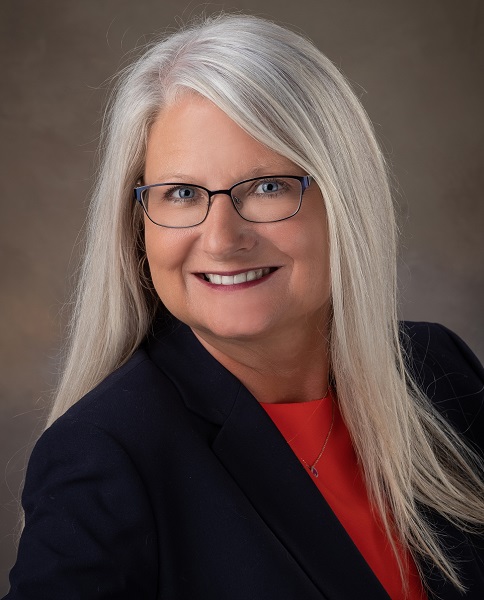 ALBERTO ANDREI ROSU/SHUTTERSTOCK
ALBERTO ANDREI ROSU/SHUTTERSTOCK
It’s a typical day. James, a likeable 15-year-old you’ve known professionally for some time, arrives on the scene. Recently, James shared with you that he wants to improve his situation and be the first in his family to attend college; he’s going to be a teacher. It almost feels like a secret. He hasn’t told many others as he considers it a long shot with a lot of past, present and future barriers cluttering his path.
James lacks a stable home — he is often couch surfing — and parental support as his father’s in jail and his mother an addict. He’s making money illegally as he can’t seem to keep the part-time jobs he finds. He’s missing school half the time and his grades are Cs and Ds. It’s a pretty bleak picture, and as a professional you look at him and resist the urge to throw up your hands. There aren’t enough resources and hours to help him and all the kids like him.
And James feels the helplessness. He sees it in your eyes and feels it in his gut. Every day he ruminates on the long list of what he doesn’t have. At school he hears “you’re late, absent, grades are low …” he gets fired from his jobs and told he’s irresponsible, he acts tough, but he’s hungry most of the time, cold in the winter, tired and feels hopeless.
Now let’s consider the young man who is resilient, so resilient that he gets up every day and faces the world. He is an entrepreneur, works when he can and when he can’t he makes enough money to support himself. He gets passing grades in most of his classes, and he’s funny. He makes his sister laugh and looks out for her. He keeps a roof over his head and makes it to school half the time. He is charismatic and has an aunt and a teacher who do what they can.

Beverlee Wenzel
This young man has hope. He sees it in your eyes when you talk about everything he has going on. He feels it when his teachers congratulate him for showing up and for getting four out of 10 answers right. There aren’t a lot of resources or enough hours but this kid’s got something going on.
Meet James. Same kid. Same story. But through two very different lenses.
Too often we approach life from the lens of deficits and illness. We seek what is broken or at a deficit and put our energy and resources toward fixing it. At times that approach is absolutely correct, but not always. Consider the idea of wellbeing, of functioning north of neutral, of being more than not sick or sad, but actually healthy and happy.
The tougher the situation the more important it is to focus on strengths and skill building. When things are the most difficult the focus becomes more about struggling well than thriving, but they are the same skills nonetheless.
How to help young people with strengths lens
As a society we want quick fixes with instant results and immediate gratification. When things go amiss we are prepared to fund them but often dismiss prevention and skill building. Science shows us we can develop skills that help us to struggle better when we need to and thrive when we can. These skills can help avert and avoid many potential pitfalls. The field is the science of wellbeing and the world of positive psychology.
Positive psychology is not the idea that all we have to do is believe everything is perfect and it will be so. The science of positive psychology is a well-researched field that uses a strengths-based approach. There are six pillars that lead to wellbeing: positive emotions, engagement, relationships, meaning and purpose, accomplishment and health and vitality. This collection is commonly known as the PERMAH model. The first five pillars were developed by Martin Seligman and Chris Peterson. The sixth was added along the way and became accepted as an equally critical component.
Here are five practices you can implement today to help young people in your sphere of influence approach life through a strengths-based lens.
- Talk about strengths often and lead conversations from a strengths-based lens.
- Do a strengths-based inventory and include things like passion, character, resources, knowledge, experiences and network.
- Build strategies that leverage strengths.
- Focus on what exists, not what is missing.
- Practice being creative and using strengths in different ways.
Two significant resources available to you include VIA Character and Search Institute.
- Visit www.viacharacter.org and discover your character strengths with a free, user-friendly adult and youth survey that will provide you with your unique character strength profile. There are 24 character strengths that people possess in varying degrees. Knowing your strengths helps you
improve your life and likelihood to thrive. Research shows people who use their strengths are 18 times more likely to be flourishing than those who don’t. The 24 strengths are appreciation of beauty and excellence, bravery, creativity, curiosity, fairness, forgiveness, gratitude, honesty, hope, humility, humor, judgement, kindness, leadership, love, love of learning, perseverance, perspective, prudence, self-regulation, social intelligence, spirituality, teamwork and zest.
- Visit www.search-institute.org to learn about the 40 developmental assets developed by the Search Institute in Minneapolis. Developmental assets are a set of skills, experiences, relationships and behaviors that are considered to be the building blocks of healthy development. They are positively correlated with healthy development and thriving behaviors and negatively correlated with risk-taking behaviors. By prioritizing increasing developmental assets youth can be the best, most-equipped version of themselves. There are eight categories of assets with half being external forces and the other half internal. External assets include support, empowerment, constructive use of time and boundaries and expectations; internal assets include positive values, commitment to learning and social competencies.
Strengths are everywhere, and though we may have to drill down deep sometimes, each young person has a variety of them. Gain traction and empower our youth through creating a sense of hope and helping them develop a solid strategy where they embrace and leverage their strengths. Compare James’ situation to the children’s game where he is stranded with only a slice of pizza, a rope and a box of matches to use to get off a deserted island. He doesn’t have a boat and one isn’t coming. The only way to get James where he needs to go is by using what he has.
Beverlee Wenzel is the executive director of The ROCK Center for Youth Development and chief creative director and author of Discover You™, a social-emotional intelligence and character development program for secondary and post-secondary students. She is an active speaker, facilitator and coach, providing professional development, workshops and keynotes to adults and youth; a Certified Public Manager (Saginaw Valley State University), certified fundraising manager (Lilly Fund Raising School), an applied positive psychology practitioner, co-author of the Certificate in Creating Wellbeing and a change leader.

























